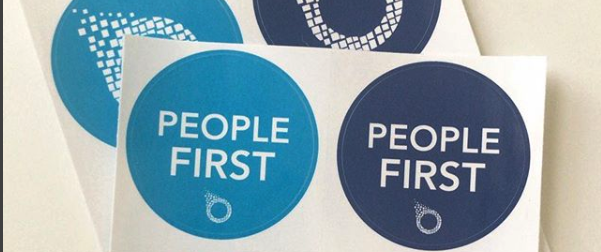
Scan any reviews of a top-rated company on Glassdoor, and you’ll quickly get a birds-eye view of what matters most to employees. Employee perks.
Perks have been around for a while. However, their purpose in organizations has transformed quite a bit over the past 10 years.
Employee perks have gone from offering coffee pots to coffee baristas. They’ve gone from offering a free six-pack of Bud Lite in the shared fridge, to having a selection of local beer on tap, and they’ve gone from a rigid 9–5 to remote work with more flexibility for all.
And it makes sense.
The data on perks shows that they're adding value to the lives of employees. More specifically, perks have been shown to:
- Company perks make employees happy. A Glassdoor Employment Confidence Survey reported, four in five employees, 80%, want benefits or perks more than a pay raise.
- Improve the bottom line. When employees are happy, they’re 20% more productive, and for public companies, it can lead to an increased stock price.
- Perks help foster company culture. What better way to get an idea of what a company values than by checking out how they invest their money.
- Help companies stand out against competitors. Developing a strong employer brand has never been more important, and your employee perks program can make the difference between hiring that next candidate or not. And hiring that top talent is essential to success as recent research shows that top performers can be up to 800% more productive, making company perks a worthy investment in employee success.
However, as the number of perks has grown, so have the problems they create.
Based on my experience as a CFO and COO, I’ve noticed many unfortunate issues with perks propping up which are only being acknowledged by company culture giants; I’ve surfaced these issues below:
1. Managing company perks is a manual process that doesn’t scale.
Whether your company offers 2 or 20 perks, someone on the team still has to pick, purchase, pilot, and maintain them for the rest of the company.
Because HR is often the last department to receive software to streamline and automate their work, email filtering and spreadsheets are still the most common methods to track perks programs today. This process is not only time consuming, it’s inefficient.
I’ve scaled company perks from 25 to 250 people using email and spreadsheets, and it isn’t pretty.
2. The current process misdirects company culture.
While it’s certainly a positive that company perks can reinforce company culture, but they can also misdirect it.
By providing onsite yoga, there’s something else that you aren’t providing.The same concept applies to every perk being offered — i.e., money being invested in pet insurance means less money for a free books program.
Not only is there the monetary opportunity-cost of perks, there’s also the invisible cost of the employee and market perception of your perks.
Who are your perks solving for?

3. The current perks approach doesn’t solve for unique teams with unique needs.
This is my biggest gripe with the current perks approach; let me address the problem by sharing an example of it in practice.
Over five years ago the company where I was CFO decided to dedicate some money toward supporting employees and enhancing company culture — as many companies were doing — and offering beer was one of the easier, more fun ways we settled on.
I had just announced that we were installing beer taps in our new office.
Everything was sunshine, rainbows, and unicorns.
Fast forward to a few months later, and people began approaching me to make personal requests because they either didn’t like the beer or couldn’t drink it.
One person asked for cider because they were gluten-free. Another requested wine because they didn’t like beer or cider. One soon-to-be mom asked if we could invest in something that wasn’t beer because she couldn’t drink but didn’t want to feel left out of team activities.
After a while though, the slippery slope of requests hit a tipping point and became something we couldn’t officially support anymore.
Having to say no to some people’s requests was deflating. I didn’t want to support just some of our people, I wanted to support all of our people.
It turns out; this problem is so prolific that at a recent People First dinner we hosted, one Head of HR said he knew he was doing his job well when everyone was “equally unhappy.” Ouch, that runs counter to the whole purpose of perks. It’s not his fault though; today’s current one-size-fits-all approach to perks is impossible to serve the needs of everyone.
Companies are earmarking money for each employee for perks, and unfortunately, if an employee doesn’t like them or can’t enjoy them, they miss out on money the business has allocated to them. And to be clear, there are employees who can’t use perks for a multitude of valid reasons such as they have dietary restrictions, they’re remote (which is especially prevalent today), they have a unique situation, or their goals and needs are different.
The problem of solving for some employees, not all, is heightened because companies are offering more perks than ever before and there is still no software to measure perks adoption. Without any data on employee adoption and usage, it’s impossible to see which perks are being used and by who. In the beer example, a situation could surface where only 5% of a team is drinking 100% of the beer, while those who can’t, miss out.
Apply this situation to every perk that you offer and it’s easy to see how quickly perks become lopsided offerings which don’t solve for diverse teams with diverse needs.
The challenge for HR and people operations folks is to figure out how to appropriately address each individual’s preferences and priorities while supporting with a more diverse set of workers and workforce segments than before.
After all, there are five generations at work, with people in various life stages from new graduates to new parents, with more dietary restrictions, location preferences, and more.
Right now, the predominant way to address this challenge is by offering more and more perks — and we know, it’s less than ideal. This method means more money, more perks to manage, and it’s still a “one-size-fits-none” approach to perks.
Today’s perks process is broken. It’s inefficient, doesn’t scale, misdirects a company’s culture and doesn’t genuinely solve for employees resulting in wasted money, effort, and unhappy employees.
Now that I’ve shared the hidden dark side of perks, I cannot help but ask, what will happen if we continue down this path of managing and offering employee perks in the future?
Is this what employers and employees actually want?
I don’t think so.
I believe there’s a better way for companies to put their money where their culture is which is why I started Compt.
If you want to be more purposeful about your perks program, let's connect so we can show you what your company can do with Compt.

This is a condensed version of our original post on Medium titled As the number of employee perks increase, so do the problems they create.
Compt is the #1 employee stipends platform that gives your people the freedom to choose the lifestyle perks that are best for them and their always evolving needs, even when remote. Interested in learning how Compt might benefit your company? Consult with our team or request a demo.
